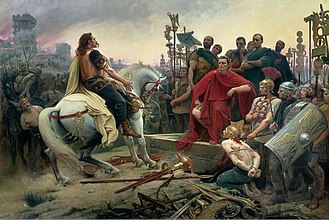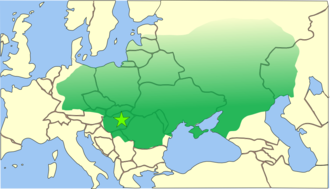This article contains one or more duplicated citations. The reason given is: DuplicateReferences detected: (September 2024)
|

This is a chronology of warfare between the Romans and various Germanic peoples . The nature of these wars varied through time between Roman conquest, Germanic uprisings, later Germanic invasions of the Western Roman Empire that started in the late second century BC, and more. The series of conflicts was one factor which led to the ultimate downfall of the Western Roman Empire in particular and ancient Rome in general in 476.
















